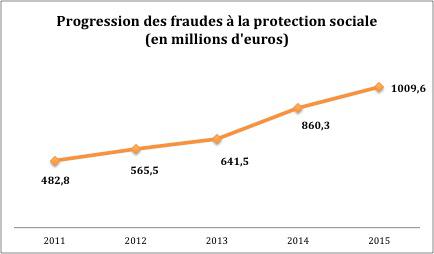Fraud cost social protection over € 1 billion in 2015. Drug sales are the main source.

More than a billion euros. This is the amount of social protection fraud. The National Committee for the fight against fraud, responsible for identifying them, submitted its report on September 14. If the figure seems disproportionate, this sector represents only a tiny part of the frauds detected in France. The tax sector is much more affected. The progression is no less troubling: since 2011, the amounts have more than doubled.
In one year, social protection fraud has increased by 17%. All branches are affected. Health insurance is not to be outdone. By itself, it represents a sum of 231.5 million euros. The most marked increases can be seen in the sale of drugs (+ 31%) and identity theft (+ 50%).
“The results are all the more impressive as the progress is observed in all branches of social security”, underlined Christian Eckert, Secretary of State in charge of the budget. Indeed, it is only the benefits in kind of health professionals and establishments that are relatively stagnant.

Valuable IT tools
This development does not reflect an increasingly uninhibited fraud, underlines the Committee. It actually reflects the increased effectiveness of monitoring and control techniques. The investigation has become more precise and the use of computer tools makes it possible to target them better. “The increasing use of information collected by the various regimes, the cross-referencing of information to detect anomalies, are the main means of increasing the performance of controls”, according to Christian Eckert. The increase in sums should therefore continue.
But identifying fraud better is no longer enough. The government now wants to work on preventing these frauds. For this, he has planned to ease the immediate sanctions, with seizures as a precaution. The fines will also be more dissuasive for fraudsters. “In the field of social contributions, the increase in penalties for fraud, which can go up to 40% of the sums due, contributes to making the penalties ever more dissuasive”, illustrated Christian Eckert.
.














